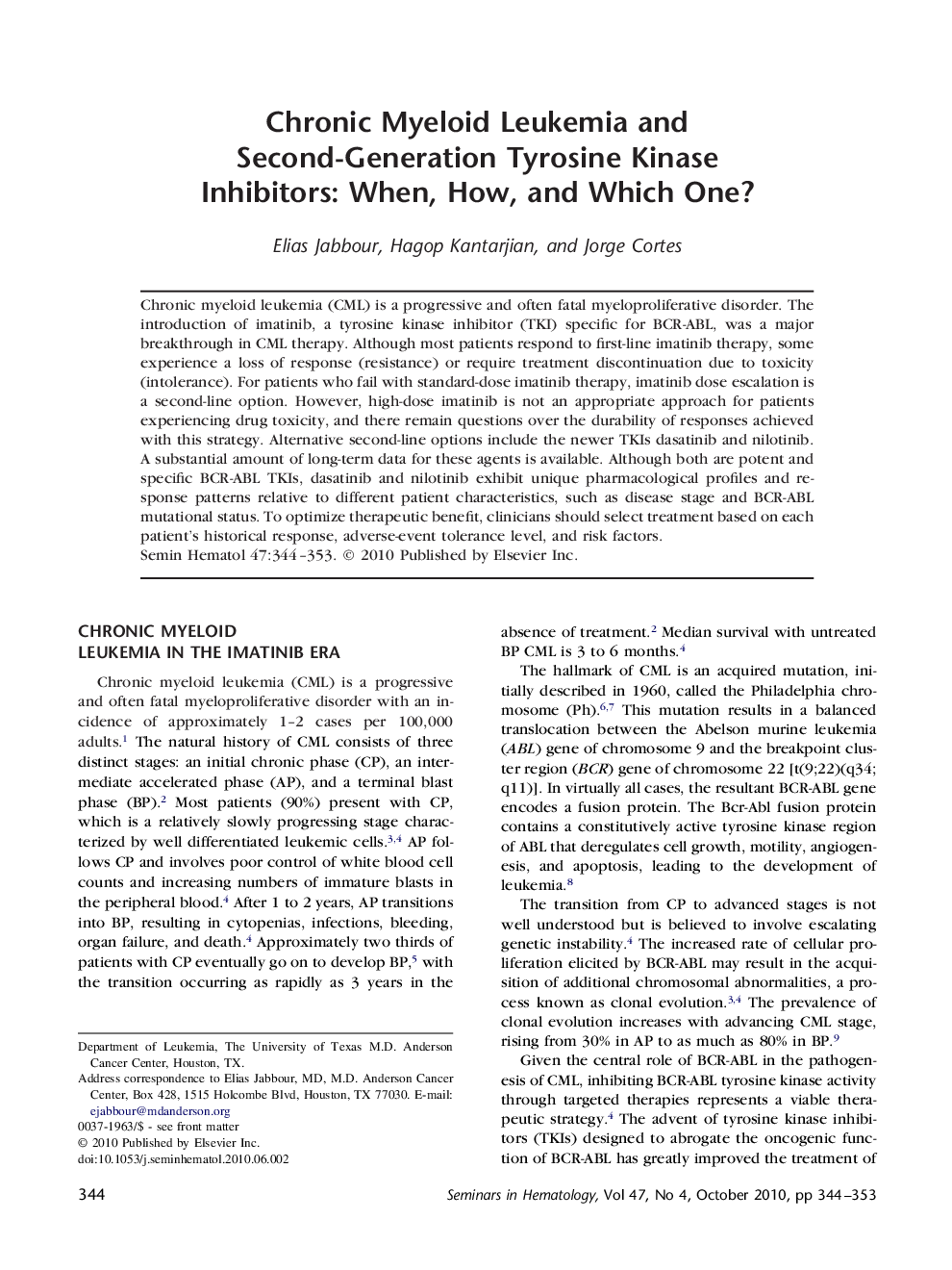| کد مقاله | کد نشریه | سال انتشار | مقاله انگلیسی | نسخه تمام متن |
|---|---|---|---|---|
| 3333708 | 1213335 | 2010 | 10 صفحه PDF | دانلود رایگان |

Chronic myeloid leukemia (CML) is a progressive and often fatal myeloproliferative disorder. The introduction of imatinib, a tyrosine kinase inhibitor (TKI) specific for BCR-ABL, was a major breakthrough in CML therapy. Although most patients respond to first-line imatinib therapy, some experience a loss of response (resistance) or require treatment discontinuation due to toxicity (intolerance). For patients who fail with standard-dose imatinib therapy, imatinib dose escalation is a second-line option. However, high-dose imatinib is not an appropriate approach for patients experiencing drug toxicity, and there remain questions over the durability of responses achieved with this strategy. Alternative second-line options include the newer TKIs dasatinib and nilotinib. A substantial amount of long-term data for these agents is available. Although both are potent and specific BCR-ABL TKIs, dasatinib and nilotinib exhibit unique pharmacological profiles and response patterns relative to different patient characteristics, such as disease stage and BCR-ABL mutational status. To optimize therapeutic benefit, clinicians should select treatment based on each patient's historical response, adverse-event tolerance level, and risk factors.
Journal: Seminars in Hematology - Volume 47, Issue 4, October 2010, Pages 344–353